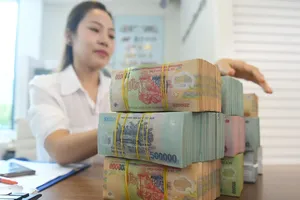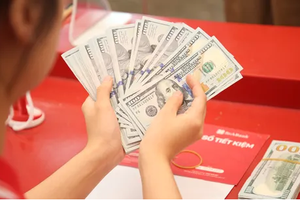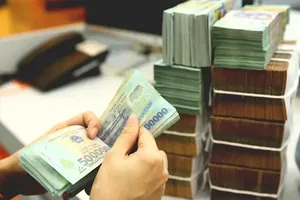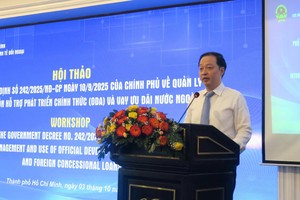The rate cap on the dong deposit was an appropriate measure to stabilize the financial market, while regulation on lowering the lending growth rate to below 20 percent was necessary to tame inflation, said the central bank’s official.
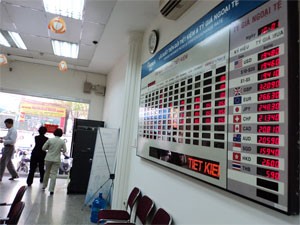
The central bank last week officially recognized the rate cap on dong deposits that had been established by local banks.
All banks are required to publicly announce their deposit rates and are not allowed to offer perks or cash bonuses that would raise rates above 14 percent, the central bank said.
Banks found in violation of the rate cap will be punished, it said.
The central bank will double reserve requirements for banks which fail to meet the targets, and restrict their operation in the second half of this year and in 2011, the central bank said in a directive on its website (www.sbv.gov.vn).
Some financial experts recommended that it was not necessary to set the rate cap on dong deposit as the central bank has already cut the credit growth rate to below 20 percent.
Nguyen Ngoc Bao, head of the monetary policy department of the state bank said pressures on the capital adequacy ratio would make many lenders struggle to mobilize capital as they had different operational scale, forcing them to start a race to raise interest rates on dong deposits.
Therefore, the rate cap on dong deposit was an appropriate measure to stabilize the market, Bao said.
The State Bank of Vietnam announced on its website last week that it punished two lenders for not cutting the depositing rate below 14 percent per year in accordance with the central bank’s regulation.
According to the central bank, Can Tho City-based Western Bank’s Hanoi branch was found offering a deposit rate of 17.8 percent per year last week, while Kien Long Bank’s Dak Lak branch gave depositors a rate of 15.7 percent per year last month.
The state bank instructed two banks to dismiss their branch directors due to the violation. Analysts said strict punishments were necessary as the government had to tighten the monetary policy to tackle inflation.
However, they were concerned that the violation triggered questions whether lenders were facing liquidity problems.
The central bank in late January decided to withdraw more than VND100 trillion (US$4.79 billion) out of a total VND132 trillion that it had lent credit organizations before Tet (Lunar New Year) to boost their liquidity.
Nguyen Van Giau, governor of the State Bank of Vietnam, said the withdrawal, which was set up dedicatedly earlier, was carried out only after deposit flow showed signs of recovery.
Giau also added commercial banks still could ensure their liquidity via interbank market and the open market operations, which offer stable interest rates.
Some lenders recommended at a meeting with the central bank last week that the regulation on restricting the credit growth rate to below 20 percent should not be applied to all banks as one percent of large-cap lenders equal to tens of percent of small-cap ones.
However, the governor Giau asked all lenders had to implement the regulation, which was set up to curb accelerating inflation. The slower lending growth rate did not put any pressure on banks’ dong depositing, he said.

